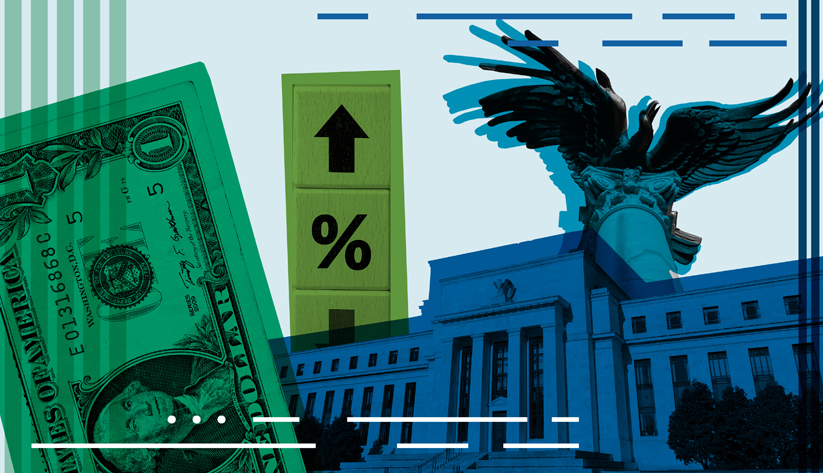August 13, 2025

The Federal Reserve (the Fed) is the central bank of the United States. But that doesn’t mean it’s the kind of bank where you get cash from an ATM, borrow money for a home, or keep a safe deposit box.
As the central bank, the Fed is tasked with a variety of responsibilities that promote the health, safety, and prosperity of the US economy and financial system. While commercial banks provide financial services directly to the public, the Fed provides services to commercial banks. That’s why some people describe the Fed as the bank for banks.
The Federal Reserve System is a nonpolitical institution that includes 12 independent regional Reserve Banks, located around the country, as well as the Federal Reserve Board of Governors in Washington, DC. Each Reserve Bank brings unique data and perspectives from their regions to the Board of Governors, so the economic experiences of all Americans are represented in the formation of monetary policy.
The Fed performs five main functions. They include:
setting the nation’s monetary policy;
promoting financial system stability;
supervising and regulating financial institutions;
fostering a safe, efficient, and accessible payments system; and,
promoting consumer protection and community development.
Today, we’re highlighting monetary policy and five key things we think everyone should know about this work. Keep an eye out for future stories on the other four functions.
1. The Fed’s monetary policy decisions affect all Americans
Monetary policy may be viewed as the Fed’s blueprint for guiding the economy to achieve two goals Congress has set for the Federal Reserve: stable prices and maximum employment. Setting monetary policy is the most well-known of the Fed’s roles.
The Fed implements monetary policy by influencing the availability and cost of money and credit through actions taken by the Board of Governors and the Federal Open Market Committee (FOMC). These actions trigger a chain of events that affect everyone’s economy, ranging from the interest rate on credit cards, to employment, to the prices of goods and services.
2. Accountable, but independent
Congress has provided the Fed with operational independence to set and implement its monetary policy goals, known as the dual mandate of stable prices and maximum employment. The intent of this independence is to distance monetary policy from short-term political objectives.
The Federal Reserve Act provides for Fed policymakers to serve 14-year terms that are independent of federal election cycles. The Fed’s decisions cannot be reversed by other parts of the government, other than by congressional legislation. Independent, however, doesn’t mean autonomous. The Fed is accountable to Congress and the American people.
3. Fed policymakers include appointed officials and private citizens
The Federal Reserve is unique among central banks in that it includes both public and private characteristics. This is especially evident on the monetary policy side, where the Fed’s policymakers are a combination of appointed officials (Board of Governors) and private citizens (Reserve Bank presidents).
The public-private aspect is critical to the Fed’s ability to achieve maximum employment and stable prices. Specifically, it ensures monetary policy decisions are always informed by a wide range of data and perspectives. For example, two business leaders from the same industry may have different opinions about demand and pricing power in their sector, depending on their regional perspectives.
4. Tools to implement monetary policy
The Fed uses several tools to ensure its monetary policy stance is implemented. The primary tool is the interest rate paid on funds that major banks hold in their reserve balance accounts at their Federal Reserve Bank.
Another tool sets a floor for the federal funds rate for financial institutions that cannot earn interest on reserves balances. The discount rate is a tool used to set the ceiling for the federal funds rate.
Lastly, the Fed maintains ample levels of reserve balances in the banking system through open market operations. The tool involves the buying and selling of Treasury securities on the open market, rather than engaging directly with the Treasury. This practice supports the Fed’s independence.
5. Communicating policy—transparently and publicly
The Fed has worked hard over the past few decades to shed its reputation of secrecy. Today, openness and transparency are core principles and encompass Reserve Bank operations as well as the FOMC’s monetary policy decisions.
The FOMC maintains a robust communications program. In addition to releasing a trove of materials immediately or soon after its meetings, and the chair’s post-FOMC meeting conferences with the media, FOMC members and other Fed officials regularly speak in public. Moreover, Fed policy allows members to speak their own mind, provided they respect the views of other members and don’t disclose details that haven’t been released to the public.
More about the Atlanta Fed’s role as a Reserve Bank
Every Reserve Bank contributes unique regional data and perspectives to the Board of Governors as part of the monetary policy process. The Atlanta Fed provides critical information about economic conditions in the Southeast. This includes input from business leaders, community leaders, and nonprofits in the region, plus real-time data collected through different Atlanta Fed business surveys. In addition, Atlanta Fed economists conduct research that provides a deeper understanding about the economy and how monetary policy interacts with various segments of the economy.
Collectively, this information helps form a holistic picture of the economy that’s presented to the Fed’s monetary policymakers.
Want to know more about monetary policy?
If you’d like to take a deeper dive into the world of monetary policy, check out The Fed Explained: What the Central Bank Does, which details the structure, responsibilities, and work of the US central banking system.
